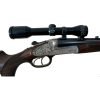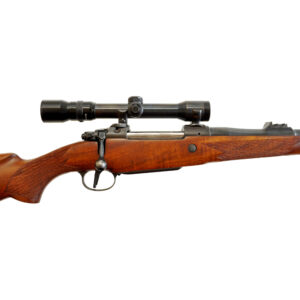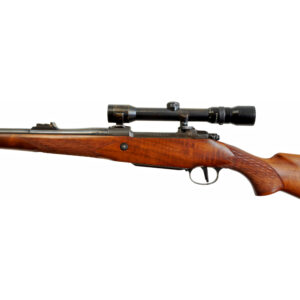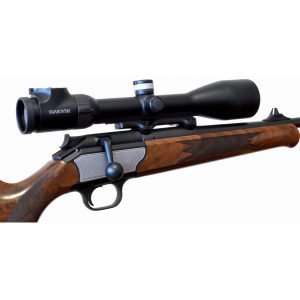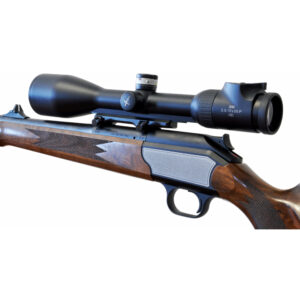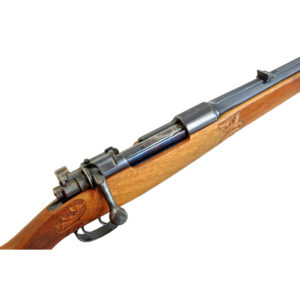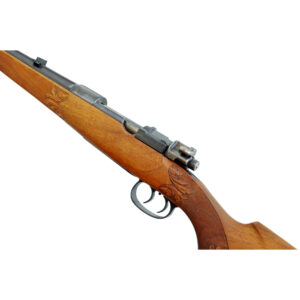Beretta 687 EELL Express Süperpoze .30-06
€ 35.000
Beretta 687 EELL Express Süperpoze .30-06
Marka: Fabbrica d’Armi Pietro Beretta
Model: 687 EELL
Tip: Süperpoze Yivli Av Tüfeği
Çapı: .30-06 Springfield
Namlu Boyu: 24″ (61 cm)
Kapasite: 2
Ağırlık:
Uzunluk: 41″ (104 cm)
Gravür: Bottega C. Giovanelli
Dürbün: Carl Zeiss Diatal-Z 4×32 T*
Açıklama
Beretta
History
Val Trompia, a northern Italian river valley in the Province of Brescia, Lombardy, has been mined for iron ore since the time of the Roman Empire. In the Middle Ages, Val Trompia was known for its ironworks; after the Renaissance it came to be a center for the manufacture of weapons. By the mid 16th century Val Trompia had forty ironworks, supplied by fifty mines and eight smelters. The birthplace of Beretta is in the village of Gardone located on the banks of the Mella river, in the middle of Val Trompia (i.e., between the upper valley and lower valley).
The Beretta forge was in operation from about 1500, although the first documented transaction is a contract dated October 3, 1526 for 185 arquebus barrels, for which the Republic of Venice was to pay 296 ducats to Maestro di Canne (master gun-barrel maker) Bartolomeo Beretta (in Italian). The original account document for the order of those barrels is now stored in the Archivio di Stato di Venezia (in Italian) in Venice. By the end of the 17th century, Beretta had become the second largest gun barrel maker in Gardone.
Under the guild system, the knowledge of gun barrel fabrication that was bequeathed to Jacopo (1520/25 – …) from his father Bartolomeo (1490 – 1565/68) was then passed on to his own son Giovannino (1550 – post 1577), and to his grandson Giovan Antonio (1577 – post 1649)[8] and so on until guilds were abolished by Napoleon after his conquest of Venetian Republic in 1797.
Beretta has been owned by the same family for almost five hundred years and is a founding member of Les Henokiens, an association of bicentenary companies that are family owned and operated.
In 1918, the Beretta Model 1918, one of the first submachine guns in the world, was fielded by the Italian army. Beretta manufactured rifles and pistols for the Italian military until the 1943 Armistice between Italy and the Allied forces during World War II. With the Wehrmacht’s control of northern Italy, the Germans seized Beretta and continued producing arms until the 1945 German surrender in Italy. In that time, the quality of the exterior finish of the weapons diminished and was much more inferior to both the pre-war and mid-war weapons, but their operation remained excellent. The last shipment of Type I Rifles left Venice for Japan in a U-boat in 1942.
After World War II, Beretta was actively involved in repairing the American M1 Garands given to Italy by the U.S. Beretta modified the M1 into the Beretta BM-59 rifle, which is similar to the M14 battle rifle; armourers consider the BM-59 rifle to be superior to the M14 rifle in some ways, because it is more accurate under certain conditions.
After the war, Beretta continued to develop firearms for the Italian Army and police, as well as the civilian market.
In the 1980s, Beretta enjoyed a renewal of popularity in North America after its Beretta 92 pistol was selected as the service handgun for the United States Army under the designation of “M9 pistol”.
In the 1970s, Beretta also started a manufacturing plant in São Paulo, Brazil. A contract between Beretta and the Brazilian government was signed, under which Beretta produced Beretta 92s for the Brazilian Army until 1980. Later this plant was sold to Taurus, who continues to manufacture the Beretta 92 under the name of PT92 using the same tools and labour which Beretta used, without the need for a license from Beretta, since the design is based on the original Beretta 92, for which the patents are expired.
Beretta acquired several domestic competitors (notably Benelli and Franchi) and some foreign companies (notably in Finland) in the late 1980s.
The Vatican Bank has been for years the main shareholder of the Pietro Beretta’s group and during the 80s it also had a relevant stakeholding in the Italian leading tecnology group Finmeccanica


